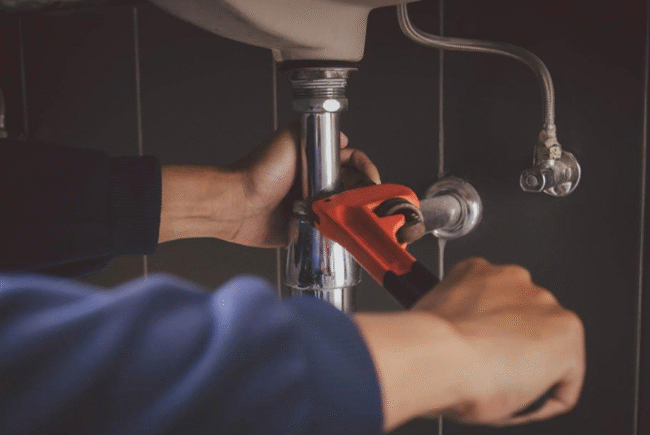
Are you planning a home renovation and worried your plumbing might cause trouble? You’re not alone, many homeowners dive into remodeling without giving their home’s plumbing a second thought.
But ignoring your plumbing could lead to costly delays and damage. This article will help you stay ahead by showing you how to prepare your plumbing the smart way.
No need for guesswork or stress. With the right steps, your renovation can flow smoothly. Let’s get your home ready-inside and out.
Turn Off the Water Supply
Before beginning any plumbing work, turn off the water supply to avoid leaks and damage. This is one of the first steps you should take before removing or installing any fixtures. The main shutoff valve is usually found near the water meter or where the main line enters your home.
If you are working on just one fixture, use the local shutoff valve for that specific area. These valves are often located under sinks or behind toilets and are easy to turn off. Make sure the valve works properly and that no water is flowing before you proceed.
Drain the Lines
After shutting off the water, you need to remove the remaining water from the pipes. Open the faucet at the lowest point in your home to allow water to drain out of the system. Then open a few higher faucets to let air into the lines and speed up the draining.
This step prevents water from spilling when you disconnect pipes or fittings. It also helps avoid pressure build-up that can cause sudden sprays or small floods. Take your time to ensure the system is fully drained before cutting or loosening any connections.
Inspect for Existing Issues
Before you start the renovation, check your plumbing system for signs of wear. Look for any water stains, wet spots, rusted pipes, or leaks around joints and fixtures. These small issues can become major problems if ignored during construction.
If you find anything concerning, repair or replace it before moving forward with your project. It’s easier to deal with these issues when the walls are open and tools are already out. Taking care of problems early reduces the chance of future plumbing failures.
Know Your Plumbing Layout
Understanding the layout of your home’s plumbing helps you avoid mistakes during the renovation. Knowing where the pipes, valves, and drain lines run allows you to plan changes without causing damage. This also makes it easier to troubleshoot if anything goes wrong.
If no layout exists, create one by drawing or photographing the system as it is now. Label valves, pipe materials, and fixture connections to stay organized. If the system is complicated, consider asking a plumber to help document it for you.
Plan for Upgrades
During a renovation, you have a chance to improve old plumbing systems. Replacing outdated pipes or fixtures now can prevent problems later. You can also add features like shutoff valves or pressure regulators for convenience and safety.
Think about your long-term needs when planning upgrades. Will you want extra water lines for new appliances or fixtures? Discuss your ideas with a plumber to find solutions that match your renovation goals and budget.
Protect Exposed Pipes
When walls and floors are removed, plumbing pipes may be left exposed. These open pipes can fill with dust, dirt, or building debris if not sealed. Use proper caps or thick tape to close the ends and keep them clean.
It’s also important to protect pipes from accidental bumps or pressure. Avoid stacking tools or materials near them while work is underway. Keeping pipes safe reduces the chance of damage and keeps the renovation moving on schedule.
Coordinate with Other Trades
Your plumbing work will likely overlap with other parts of the project. Electricians, carpenters, and HVAC technicians may need access to the same walls or spaces. Make sure everyone understands the plan and timeline for the work.
Having all contractors work from the same schedule helps reduce conflicts and delays. Keep regular communication between trades to handle problems quickly. A shared plan keeps your renovation on track and avoids repeated work.
Get Permits If Needed
Depending on the type of work, you may need a plumbing permit from your local building office. This is especially true if you are moving pipes, installing new drains, or making structural changes. Permits make sure the work meets safety and code standards.
Check the permit rules before starting, as laws vary by city or state. If needed, submit your plans and schedule inspections at the right times. Failing to get a permit can lead to fines, project delays, or problems when selling your home.
Hire a Licensed Plumber
Some plumbing jobs are too complex for DIY work. Rerouting water lines, moving drains, or installing a new water heater often requires advanced skills. A licensed plumber has the training and tools to do the job correctly and safely.
Plumbers also stay updated on codes and permit requirements. They can spot issues you might miss and offer advice on improving your system. Hiring a professional ensures the work is done right and protects your home from costly mistakes.
Test the System After Work Is Complete
After your renovation is done, test the plumbing system before closing up walls or sealing floors. Turn the water supply back on slowly and watch for any signs of leaks. Run all faucets and fixtures to make sure they work as expected.
Check under sinks, around pipe joints, and near new installations for moisture. If you find any problems, address them right away before they cause damage. Testing early helps catch mistakes and confirms that everything was installed properly.
Home’s Plumbing: Keep Your Remodel Flowing From the Inside Out
Renovating your home should be exciting, not filled with surprise leaks or unexpected repairs. A bit of planning on home’s plumbing can make all the difference. Treat your pipes like part of the foundation, not an afterthought.
Whether you’re working with a pro or doing it yourself, careful prep will save time and stress. A smooth renovation starts with smart decisions behind the walls.
Did you learn something new from this article? If so, be sure to check out our blog for more educational content.
